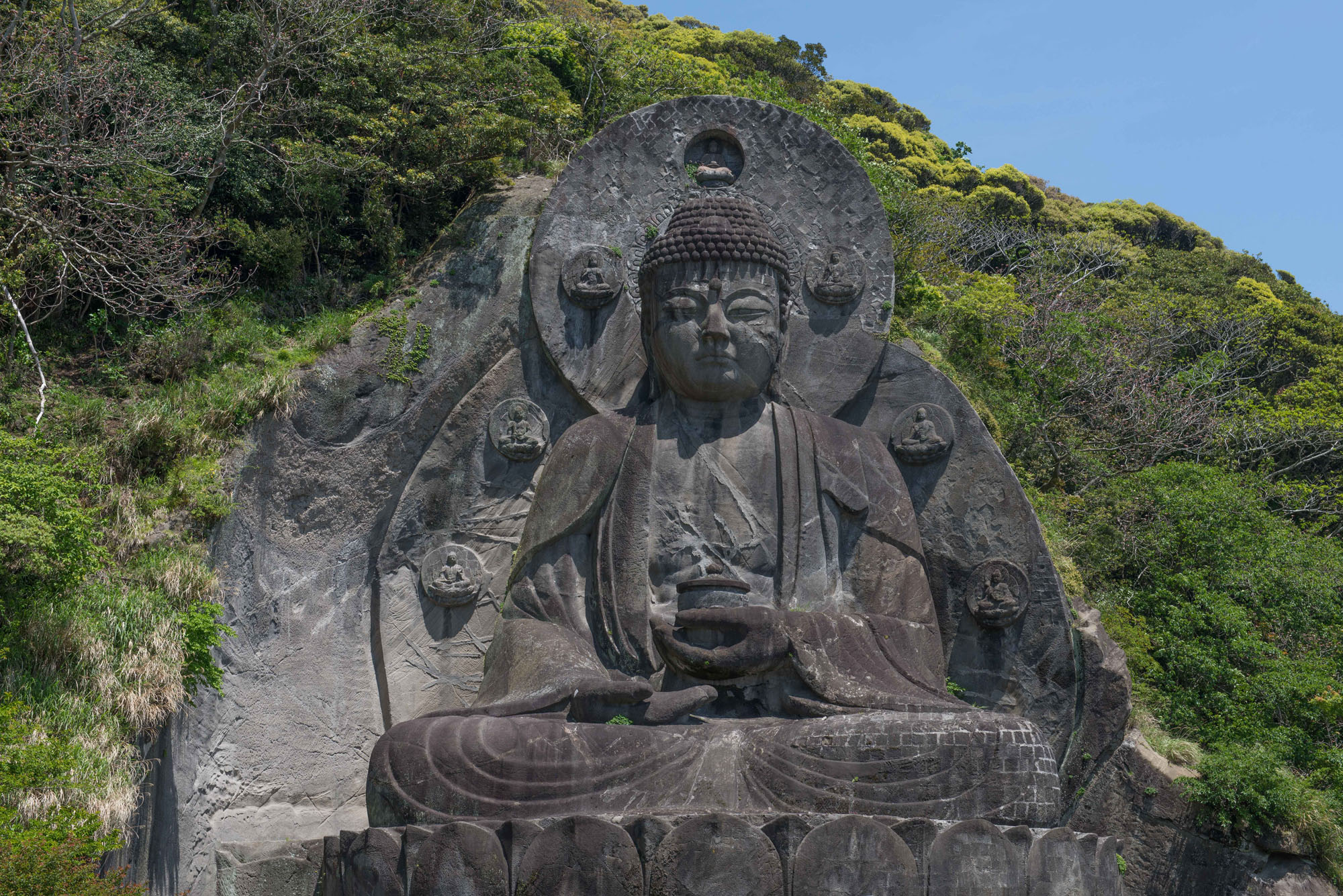It's a moot point for those who live there that the name "Chiba" is, in many minds, synonymous with images of hot-rod gangs, peanut farms, car dealerships, pachinko emporiums, empty lots with chain-link fences and giant electric pylons marching across rice fields — a purgatorial transition between city and countryside.
If parts of Chiba Prefecture seem like a well-planned wasteland, a place of banishment for economic failure, there is a rural aspect to the area that is often overlooked, where it is possible to feel a kind of wind-swept remoteness, places even of spiritual resonance. Mount Nokogiri, or Saw-tooth mountain, way down the west coast of Chiba's Boso Peninsula, is known for being the site of Japan's largest rock-carved Buddha, though this fact seems to be little known outside of the prefecture.
Many of the contradictions of Japan's strained relationship to nature are present on the mountain, where we see the razor gauges of defacement that are reminders of the time when its rock faces were quarried, but also a venerating of their surfaces with the incision of Buddhist deities on them.


















With your current subscription plan you can comment on stories. However, before writing your first comment, please create a display name in the Profile section of your subscriber account page.